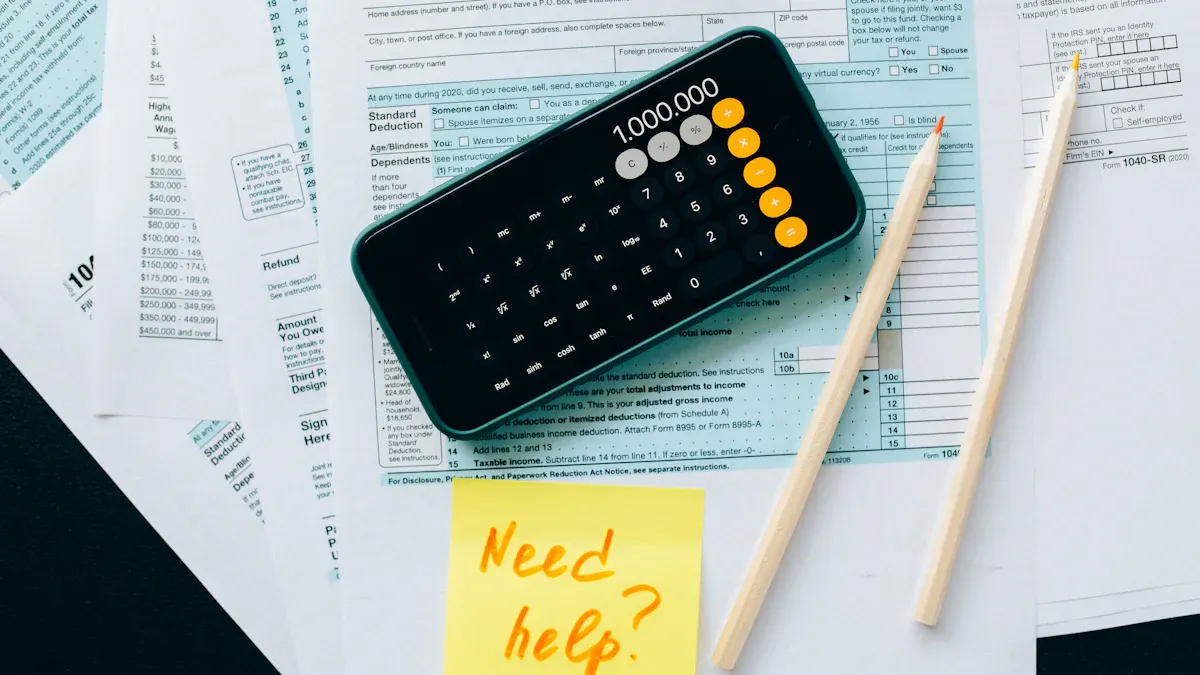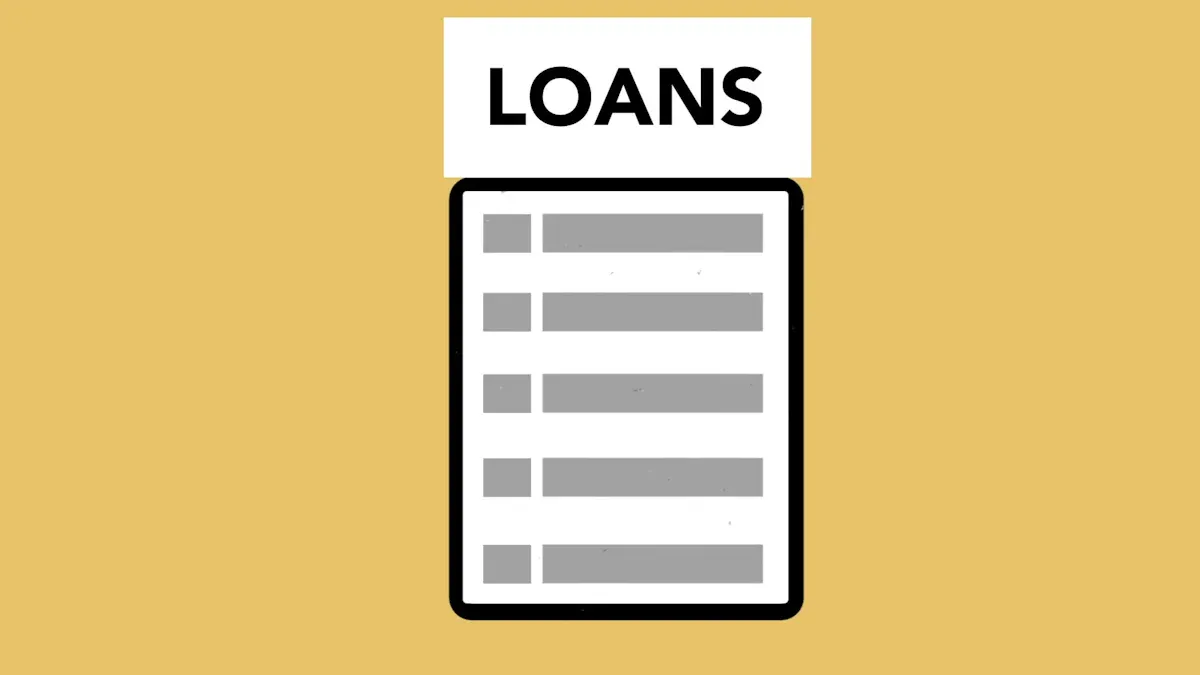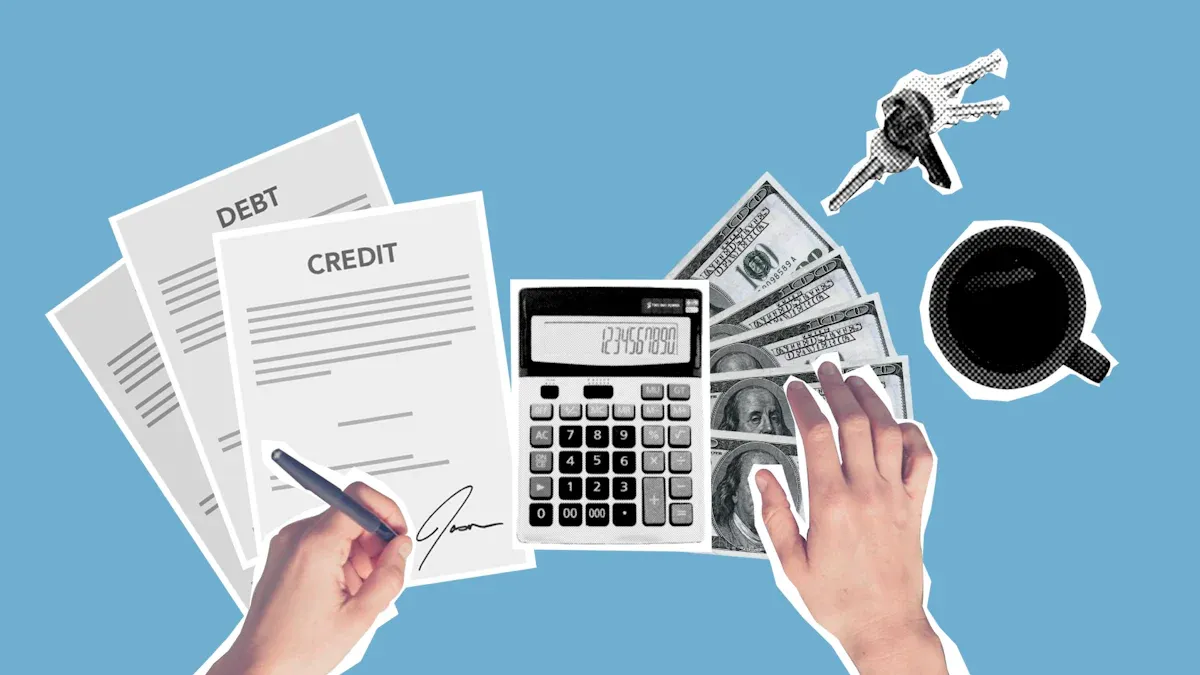Image Source: pexels
Applying for a personal loan can seem stressful at times, especially when you encounter common issues in personal loan applications and their solutions. Identifying these problems early can help prevent delays or even denial of your application. Taking steps such as learning the process, gathering the necessary documents, and borrowing wisely can significantly alleviate these concerns. By addressing these common issues, you can make the application process smoother and improve your financial situation.
Key Takeaways
- Look at your credit score often. Fix mistakes to help get a loan.
- Collect all needed papers before applying. Have ID, income proof, and address ready to avoid waiting.
- Compare loan options closely. Check rates, fees, and terms to pick the best one for you.
Poor Credit Score
Why Credit Score Matters
Your credit score is very important for getting a personal loan. Lenders check it to see if you are reliable with money. A good credit score shows you handle finances well, so lenders trust you more. A bad credit score can mean higher interest rates or even rejection. Knowing why your credit score matters helps you work on improving it for better loan options.
Tip: Check your credit report often to fix mistakes and improve.
Problems That Hurt Credit Score
Many things can lower your credit score. Paying bills late, using too much credit, or applying for too many loans are common problems. Mistakes on your credit report, like wrong account details, can also hurt your score. If you don’t have much credit history, lenders may not trust you yet. These issues make it harder to get a personal loan.
How to Fix Your Credit Score
Fixing your credit score takes time and effort. Pay your bills on time and lower your debts. Don’t apply for too many loans or credit cards quickly. If you find errors on your credit report, contact the credit bureau to fix them. Building good credit takes patience, but these steps can help a lot.
Note: If you’re new to credit, try a secured credit card or ask to be added to someone else’s account to build credit.
By solving these problems, you can handle one of the biggest challenges in personal loan applications.
Insufficient Documentation
Important Papers for Loan Applications
To get a personal loan, you must show certain papers. These prove who you are, your income, and your finances. Lenders usually ask for:
- Proof of Identity: An ID like a passport or driver’s license.
- Proof of Income: Pay stubs, tax forms, or bank records.
- Proof of Address: Bills or rental contracts with your address.
- Credit History: A report or summary of your credit score.
Having these ready makes the process faster and easier.
Problems with Missing or Wrong Papers
Not having the right papers can cause big problems. Lenders might reject your loan if they can’t confirm your details. For instance, old pay stubs or mismatched addresses on your ID and bills can cause issues. These mistakes may delay or stop your loan approval.
Tip: Check all your papers carefully before sending them in.
How to Prepare Your Documents
Being ready helps avoid problems with your papers. Make a list of what the lender needs. Keep your papers in a folder or on your computer for quick access. If you’re confused about anything, ask the lender for help.
Pro Tip: Save copies of everything you send for your own records.
Fixing document issues helps solve one of the biggest problems in personal loan applications.
Lack of Loan Comparison
Why Comparing Loan Offers Matters
Not comparing loans can cost you more money. Each lender has different rules, rates, and fees. Comparing helps you find the best loan for your needs. It also helps you avoid extra fees and keeps payments affordable. Without comparing, you might pay too much or pick a loan that doesn’t match your goals.
Tip: Check the total repayment amount, including all fees, before deciding.
Effective Loan Comparison Strategies
To compare loans well, look at important details. First, check interest rates. Fixed rates stay the same, but variable rates can change. Decide if you want a secured loan with collateral or an unsecured one without it. Look at fees like origination, prepayment, and late-payment charges. Think about the loan term—longer terms lower payments but add more interest. Make sure monthly payments fit your budget easily.
Tools for Loan Comparison
Some tools make comparing loans easier. Online calculators show monthly payments and total costs based on rates and terms. Comparison websites let you see lenders’ rates, fees, and terms side by side. Financial advisors can also give advice just for you. These tools save time and help you choose wisely.
By comparing loans, you can avoid problems and have a better borrowing experience.
Hidden Fees and Charges
Spotting Hidden Fees
Hidden fees can make your personal loan cost more. These fees might include origination fees, which cover lender costs. Origination fees could be a set amount or a percentage of the loan. You can find these fees by reading the Loan Estimate from your lender. This document lists all loan costs and is required by law. If you ignore it, you might face surprise expenses later.
Tip: Always check the Loan Estimate carefully to find hidden fees.
Stopping Surprise Costs
To avoid surprises, learn about all loan fees. Common ones include prepayment penalties, late fees, and processing charges. Ask your lender to explain all costs before agreeing to the loan. Compare fees from different lenders to avoid overpaying. Knowing the details helps keep your loan affordable and stress-free.
Pro Tip: Pick lenders who clearly explain their fees to avoid surprises.
Important Questions About Fees
Asking questions can help you save money. Ask if there are origination fees or penalties for early payments. Find out about late fees and how they are calculated. If any fee seems unclear, ask for an explanation. Clear answers help you understand costs and make smarter choices.
By handling hidden fees, you solve one of the big problems in personal loan applications.
Unrealistic Repayment Planning
Risks of Poor Repayment Planning
Not planning how to repay your loan can cause big problems. Without a plan, you might miss payments and face late fees. Missing payments can also hurt your credit score, making future loans harder to get. If you think you can pay more than you really can, you might end up in debt. Ignoring other bills while focusing on the loan can also cause trouble. Poor planning can lead to stress and money problems that affect your life.
Tip: Check your income and spending before choosing a repayment plan.
Creating an Affordable Repayment Plan
To make a good repayment plan, start by listing your income and bills. Use leftover money for loan payments but save some for emergencies. Pick a loan term with payments you can afford and low interest. Set up automatic payments to avoid forgetting due dates. If your money situation changes, ask your lender about flexible options.
Pro Tip: Follow the 50/30/20 rule—use 50% of income for needs, 30% for wants, and 20% for savings and loan payments.
Budgeting Tools for Loan Management
Budgeting tools can help you manage your loan better. Apps like Mint or YNAB let you track spending and set goals. Spreadsheets are useful for keeping up with payments and interest. Many lenders have online tools to check your payment schedule and pay bills. These tools keep you organized and help you avoid missing payments.
By fixing poor repayment planning, you can solve one of the common problems in personal loan applications.
Misunderstanding Loan Terms
Key Loan Terms to Know
Knowing loan terms is very important when getting a personal loan. Not understanding them can cause expensive mistakes. Some terms people often get confused about are:
- Private Mortgage Insurance (PMI)
- Loan-to-Value Ratio (LTV)
- Debt-to-Income Ratio (DTI)
- Annual Percentage Rate (APR)
- Fixed-Rate Mortgage and Adjustable-Rate Mortgage (ARM)
- Discount Points and Rate Lock
- Principal, Interest, Taxes, and Insurance (PITI)
- Origination Fees
These terms affect how much your loan costs and how you pay it back. For example, APR shows the interest rate plus extra fees, so you know the full cost. DTI helps you see if you can afford the loan.
Tip: Learn these terms before agreeing to any loan.
Problems from Misunderstanding Loan Terms
Not knowing loan terms can lead to money troubles. If you don’t understand APR, you might think the loan costs less than it does. Adjustable-rate mortgages can surprise you with higher payments later. Missing origination fees could mean paying more upfront than expected. These mistakes can make it harder to stick to your budget.
If you don’t know about PITI or PMI, your monthly payments might shock you. For example, PMI adds extra costs if your down payment is too small. Misunderstanding these terms can mess up your plans and cause stress.
Asking Lenders for Help
Always ask your lender to explain loan terms before signing anything. Ask questions like how APR is different from the interest rate or if there are prepayment penalties. Request a list of all fees to avoid surprises later.
Pro Tip: Write down what your lender says and check the loan estimate carefully.
By learning and asking about loan terms, you can avoid confusion. This helps you make smart choices and solve one of the common problems in personal loan applications.
High Debt-to-Income Ratio
Why Debt-to-Income Ratio Matters
Your debt-to-income (DTI) ratio is key for loan approval. It shows how much of your income goes to paying debts. Lenders check this to see if you can handle more debt. A low DTI ratio means you manage money well, making you less risky.
Most lenders like a DTI ratio under 36%. Some may allow up to 43% if you have a good credit score or other strengths. A high DTI ratio might mean loan rejection or higher interest rates. It shows you could struggle with extra payments.
Tip: Find your DTI ratio by dividing total debt payments by your income.
Ways to Lower Your Debt-to-Income Ratio
Lowering your DTI ratio helps you get loan approval. Try these steps:
- Pay off debts: Start with high-interest ones first.
- Combine loans: Merge debts into one for easier payments.
- Earn more money: Get a side job or ask for a raise.
- Talk to creditors: Ask for lower payments or interest rates.
- Borrow less: Apply for a smaller loan amount.
Pro Tip: Use the snowball or avalanche method to pay off debts faster.
Getting Ready for Loan Approval
To prepare, aim for a balanced DTI ratio. Pay more than the minimum on debts to lower balances quickly. If possible, make a bigger down payment to reduce the loan size. Use budgeting tools to track your progress and stay organized.
Fixing your DTI ratio helps solve a common loan application problem.
Unstable Employment History
Why Employment History Matters
Your job history is important when applying for a personal loan. Lenders check it to see if you can repay the loan. Having a steady job with regular income makes them trust you more. But switching jobs often or having gaps in work can worry them.
Note: Most lenders like to see at least two years of steady work.
Unstable job history can make getting a loan harder. For example:
- Pay stubs from many jobs make income hard to confirm.
- Changing jobs recently might look like financial trouble.
- Freelance or gig work can confuse lenders about your earnings.
Knowing why job history matters helps you get ready to apply.
Fixing Employment Gaps
Gaps in your job history don’t have to stop your loan. Explain why you weren’t working during those times. If you took a break for school or family, show proof of it.
Talk about any skills or training you gained during the gap. If you just started a new job, share your income details and work contract. This shows lenders you’re now financially stable.
Tip: Always be honest about your job history. Lenders like honesty.
Showing Financial Stability
Even with job gaps, you can prove you’re financially stable. Keep a good credit score and lower your debt-to-income ratio. Show savings or investments to prove you manage money well.
If you’re self-employed or freelance, give records of your income for the last two years. Use tax forms, bank statements, or contracts to back up your earnings.
Pro Tip: A co-signer with steady income can help you get approved.
By explaining job gaps and showing financial stability, you can solve one of the common problems in personal loan applications.
Fixing common problems in loan applications makes things easier. Follow these steps to simplify the process:
- Learn about loan details like rates and payment plans.
- Collect all needed papers early.
- Compare lenders and check their rules closely.
Knowing what to do and being ready saves time, cuts costs, and helps you get the right loan.
FAQ
What credit score do you need for a personal loan?
Most lenders want a credit score of 600 or more. Some may still approve lower scores but with higher interest rates.
How do you find hidden fees in a loan?
Look at the Loan Estimate document closely. Ask your lender about fees like origination charges or prepayment penalties before agreeing.
Tip: Always ask for a full list of fees to avoid surprises.
Can you get a loan with a shaky job history?
Yes, it’s possible. Show proof of savings or use a co-signer to assure lenders you can repay the loan.




